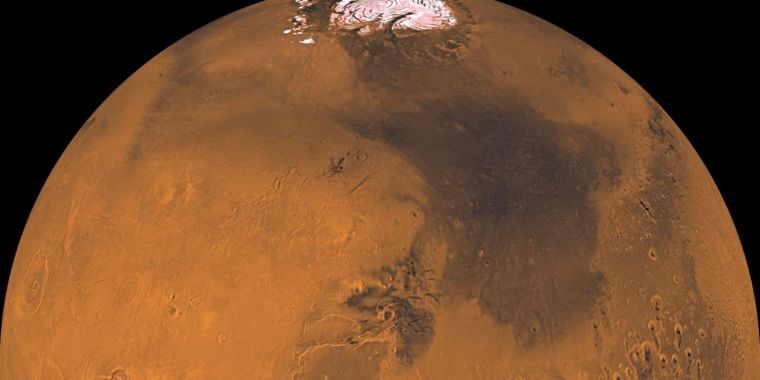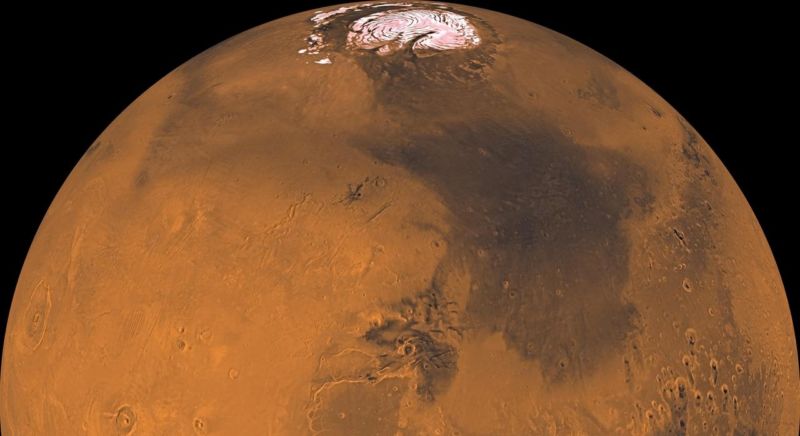

NASA
NASA is taking its first steps toward opening a commercial route to Mars.
The space agency's Jet Propulsion Laboratory this week issued a new industry request titled “Exploring Mars Together: Commercial Services Studies.” This is a request for proposals from the US space industry to tell NASA how it would complete one of four private missions to Mars, including delivering small satellites to orbit or providing imaging services around the red planet.
“The draft plan for the Mars exploration program over the next two decades will use lower-cost missions more frequently to bring compelling science and exploration to the larger community,” the document states. “To achieve the plan’s goals, U.S. government and industry will collaborate to leverage existing and emerging commercial products and services for Earth and the Moon to significantly reduce overall cost and accelerate leadership in deep space exploration.”
Design reference missions
NASA will pay proposers $200,000 for one reference mission study, or $300,000 for a maximum of two studies. The space agency said it intends to award “multiple” contracts.
In its 496-page solicitation, NASA identified four “design reference tasks” on which companies could bid. Essentially, the space agency is asking companies how to accomplish these tasks. Here are the four “benchmark” tasks that companies can bid on:
- Deliver and host a smaller payload: Carrying and delivering payloads provided by the Mars Exploration Program, including deployed cubesats, and operating in Mars orbit. Payload mass up to 20 kg.
- Deliver and host larger payload: Carrying and delivering one or more detachable spacecraft to Mars orbit and optionally servicing one or more hosted payloads for a total customer mass of 1,250 kg.
- Photoelectric imaging servicesProviding a sensor platform and an orbital spacecraft for imaging services on Mars for two years. Imaging will be used to support observational scientific investigations, landing site selection and risk assessment, change detection, and monitoring and planning of surface assets.
- Next generation migration servicesProviding communications relay services between Mars and Earth for surface and orbital assets for a period of four years.
So what exactly is going on here?
In recent years, NASA has evolved from “owning” all the rockets and spacecraft it uses to explore the solar system to a more service-based model. A good example of this is the Commercial Crew Program. NASA does not own SpaceX's Crew Dragon vehicle. Instead, it provided some funding for spacecraft development and then purchased flights as needed for its astronauts. Meanwhile, SpaceX owns and operates Crew Dragon and can fly special missions, as it did with Inspiration4.
CLPS but for Mars?
The space agency has expanded this approach to the Moon through its Commercial Lunar Payload Services program, where it purchases lunar landings as a service from companies such as Astrobotic, Intuitive Machines, and Firefly. In exchange for accepting a higher risk of failure (as with the recent Astrobotic mission), NASA gets two big advantages: a much lower price and an increasingly vibrant commercial space industry. The goal, ultimately, is to be able to take advantage of the low costs of commercial space to allow NASA to do more science and exploration.
With this new order, NASA is, for the first time, expanding this commercial approach to Mars. In that sense, this RFP is important, even though the dollar amounts involved are small.
The elephant in the room when it comes to commercial exploration of Mars is SpaceX's Starship rocket, which was designed and tested expressly with the intention of one day opening up a Mars settlement. Ars explored the potential of the spacecraft, and how some scientists were interested in seeing it used on Mars, in a feature article two years ago.
Cast a wide net
However, it is clear in this solicitation that NASA is looking for a wide range of potential contributors. Payloads as small as 20 kg open the door to a large number of service providers, and imaging services may be attractive to companies that already do this in low Earth orbit, such as Planet.
“I'm curious to see whether this demand will bring many new players to the table, or whether Mars' unique challenges combined with its low commercial value will only attract established players on the Red Planet,” said Tanya Harrison, a Mars scientist involved in the study. Founding the Earth and Planetary Institute in Canada, he told Ars.
This approach has the potential for NASA to test the waters for commercial space on Mars while providing some potential replacements for its aging fleet there. For example, the agency's Mars Reconnaissance Orbiter has been on the Red Planet since 2006, providing a range of functions, including high-resolution imaging and relaying communications to Earth from the surface. NASA is interested in seeing whether commercial providers might replace some of these functions.
It is worth noting that NASA is not currently pursuing a commercial Mars lander. This would be too ambitious at this time, and would likely limit the potential number of bidders to just a few, such as SpaceX and Lockheed Martin.

“Web maven. Infuriatingly humble beer geek. Bacon fanatic. Typical creator. Music expert.”





More Stories
Scientists confirm that monkeys do not have time to write Shakespeare: ScienceAlert
SpaceX launches 23 Starlink satellites from Florida (video and photos)
A new 3D map reveals strange, glowing filaments surrounding the supernova